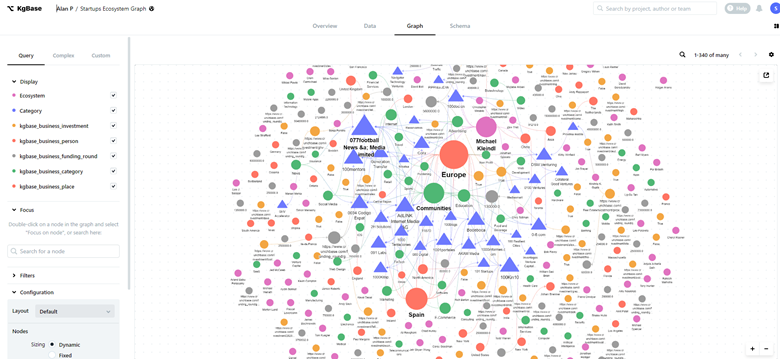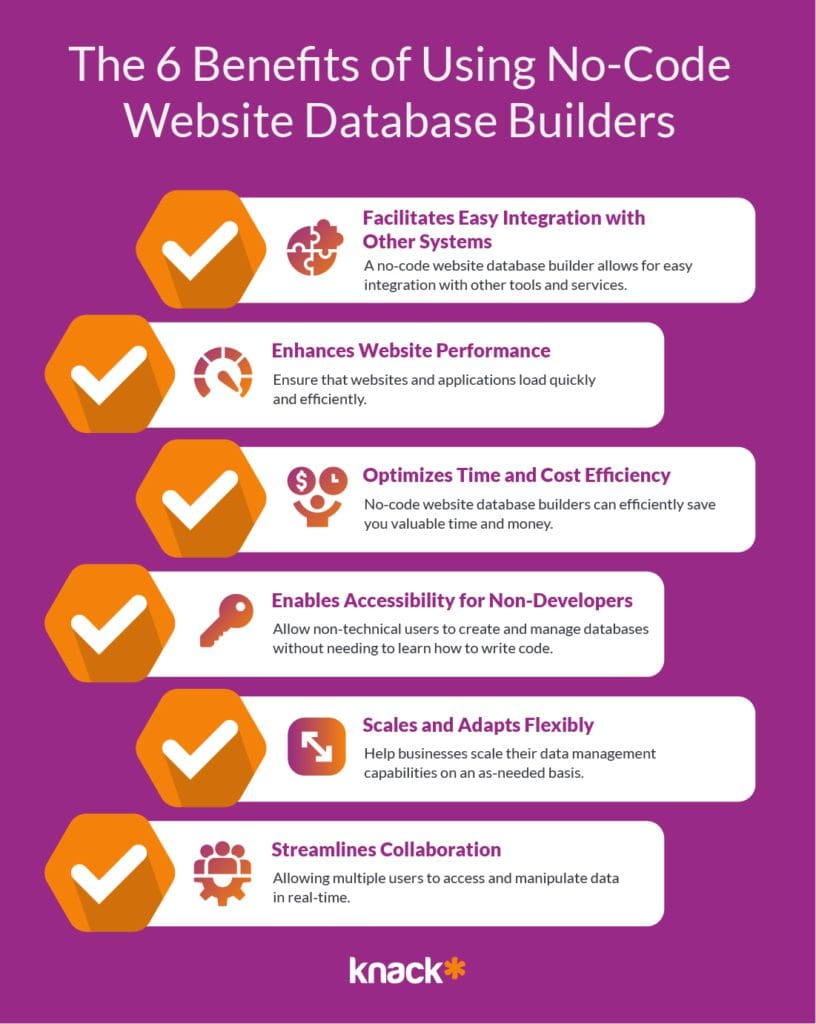No-Code Operating Systems for Open Platform Database Development: Conserve Time and Resources
No-Code Operating Systems for Open Platform Database Development: Conserve Time and Resources
Blog Article
A Comprehensive Overview to Applying Scalable Data Sources Without the Need for Coding Knowledge
In the modern landscape of information administration, the capability to execute scalable data sources without coding experience is coming to be significantly essential for organizations of all dimensions. This overview aims to light up the process, focusing on user-friendly tools and user-friendly user interfaces that debunk data source setup. By examining vital attributes, effective strategies for execution, and finest practices for ongoing administration, we will address just how also non-technical individuals can with confidence navigate this complicated terrain. What are the essential components that can genuinely equip these users to utilize scalable databases efficiently? The solutions might redefine your strategy to data management.
Comprehending Scalable Databases
In the world of modern information management, scalable data sources have become a vital option for organizations looking for to deal with raising volumes of details effectively. These databases are created to fit development by allowing for the seamless enhancement of resources, whether with straight scaling (including extra makers) or upright scaling (upgrading existing devices) This versatility is crucial in today's busy electronic landscape, where data is produced at an unprecedented price.
Scalable data sources generally utilize distributed designs, which make it possible for information to be spread out across numerous nodes. This distribution not just improves efficiency however also supplies redundancy, making certain data accessibility even in case of equipment failures. Scalability can be an essential factor for various applications, including shopping systems, social media sites networks, and big data analytics, where customer need can fluctuate substantially.
Furthermore, scalable databases typically include robust data consistency designs that stabilize efficiency and integrity. Organizations should consider their particular needs, such as read and compose rates, information honesty, and mistake resistance when choosing a scalable data source solution. Ultimately, comprehending the underlying principles of scalable databases is necessary for services intending to grow in a progressively data-driven globe.
Trick Features to Search For
When examining scalable data sources, a number of vital functions are paramount to guaranteeing ideal performance and reliability. Primarily, consider the architecture of the database. A dispersed design can enhance scalability by allowing information to be kept across numerous nodes, promoting smooth data gain access to and processing as need rises.
Another vital function is data dividing, which allows reliable administration of huge datasets by dividing them into smaller sized, extra manageable pieces (no-code). This strategy not only boosts performance but additionally simplifies source allowance
Additionally, search for durable replication capacities. This function guarantees information redundancy and high availability, decreasing downtime throughout upkeep or unforeseen failings.
Performance monitoring devices are likewise essential, as they supply real-time insights right into system health and functional efficiency, permitting for timely modifications to maintain ideal efficiency.

User-Friendly Data Source Devices
Simpleness is an important element in the layout of straightforward database devices, as it improves ease of access for users with differing levels of technological knowledge. no-code. These tools prioritize intuitive user interfaces, allowing users to develop, manage, and question databases without needing comprehensive shows understanding
Key attributes usually include drag-and-drop capability, visual data modeling, and pre-built layouts that enhance the arrangement process. Such devices typically offer led tutorials or onboarding processes that assist in user involvement and decrease the learning curve. In addition, seamless assimilation with popular information sources and solutions makes sure that customers can quickly import and export information, even more streamlining operations.

Additionally, robust support and area resources, such as forums and documentation, boost the individual experience by offering assistance when needed. On the whole, straightforward database devices equip organizations to harness the power of scalable data sources, making information management accessible to every person included.
Step-by-Step Implementation Overview
Exactly how can organizations properly carry out scalable databases to fulfill their growing information needs? The procedure begins with determining specific information requirements, consisting of the quantity, variety, and rate of data that will be refined. Next, companies ought to review user-friendly database tools that supply scalability functions, such as cloud-based solutions or handled data source services.
As soon as the best tool is picked, the next action involves setting up the data source atmosphere. This consists of establishing circumstances, defining customer consents, and establishing information frameworks that align with business objectives. Organizations needs to then move existing information into the brand-new system, guaranteeing information stability and marginal disruption to procedures.
Post-migration, performing detailed screening is crucial; this consists of efficiency testing click here to find out more under numerous load problems to make certain the system can handle future growth - no-code. Furthermore, it is necessary to educate staff on the data source management interface to help with seamless use
Best Practices for Management
Effective management of scalable databases requires a tactical method that prioritizes recurring tracking and optimization. To attain this, companies should implement durable surveillance devices that supply real-time understandings right into database performance metrics, such as query action times, resource utilization, and transaction throughput. Routinely analyzing these metrics can help recognize traffic jams and locations for enhancement.

Regular backups and calamity recovery plans are important to safeguard data stability and accessibility. Developing a routine for evaluating these backups will certainly ensure a reputable recuperation procedure in instance of an unexpected failure.
Furthermore, efficiency tuning should be a constant process. Changing indexing strategies, enhancing queries, and scaling resourcesâEUR" whether vertically or horizontallyâEUR" will certainly help preserve ideal performance as usage needs evolve.
Last but not least, fostering a society of expertise sharing among employee will certainly enable continual learning and adaptation, making certain that the management of scalable data sources continues to be efficient and efficient with time.
Verdict
Finally, the implementation of scalable databases can be successfully attained without coding expertise through the use of view website instinctive user interfaces and user-friendly tools. By adhering to the laid out strategies for configuration, data migration, and performance screening, people can browse the intricacies of database monitoring effortlessly. Emphasizing finest methods for continuous maintenance and partnership additional improves the capability to take care of scalable data sources successfully in a swiftly evolving data-driven environment.
In the modern landscape of information monitoring, the capacity to apply scalable data sources without coding know-how is coming to be increasingly crucial for companies of all sizes.In the realm of modern data monitoring, scalable data sources have arised as a vital remedy for organizations looking for to handle boosting volumes of details effectively.Additionally, scalable databases typically include robust click information uniformity versions that stabilize performance and reliability.Just how can organizations properly implement scalable data sources to fulfill their expanding information demands? Next off, companies must evaluate straightforward database tools that use scalability functions, such as cloud-based remedies or managed database services.
Report this page